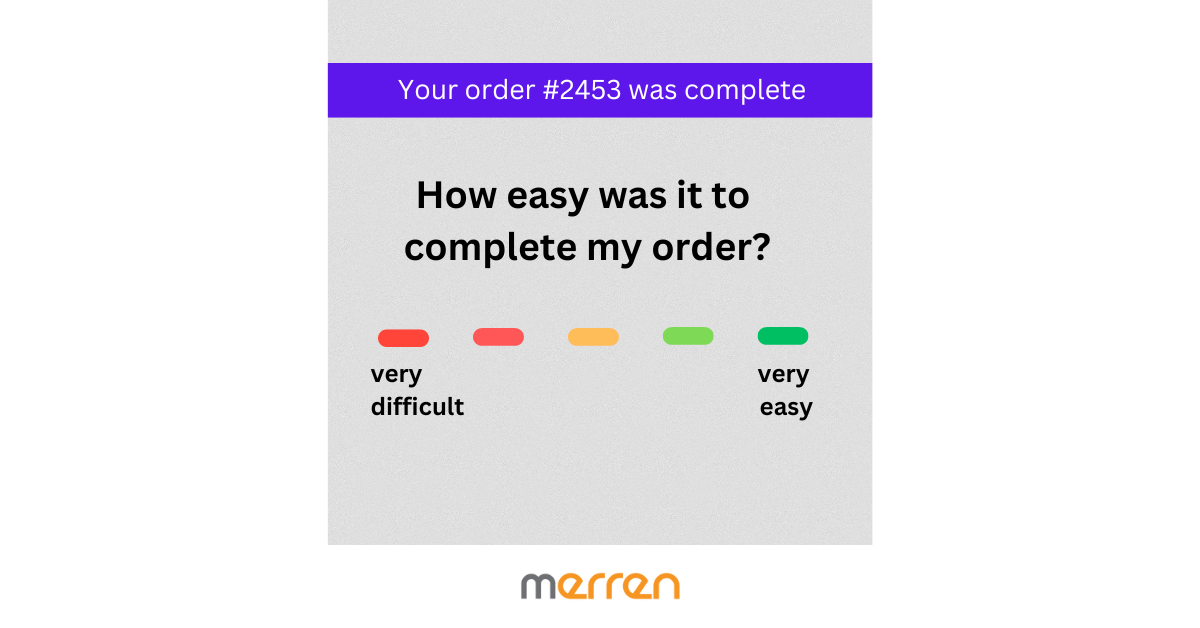Customer effort score is a metric used to measure how easy it is for customers to interact with your company and get what they need. It is the effort a patron will go through during an interaction with the customer support. It will mostly be during a resolution or a demo call (for a product/service usage). In this blog, we’ll cover everything you need to know about CES. Plus, we’ll explore the connection between CES and other popular metrics like NPS and CSAT.
What is CES?
CES is an acronym for Customer Effort Score, which measures how easy it is for customers to use a product or service. The score typically ranges from 1-7 or 1-5, with higher scores indicating less effort. It can be used to pinpoint areas for improvement in customer experience. To identify areas of high effort in customer interactions, customer service organizations can use CES with relation to operational metrics such as repeat calls, transfers, and channel switching. This will help them find out the high pain-points during an interaction. The main aim is to deliver an effortless experience for every consumer base.
CES Survey Types: when to use it?
The right time to send a Customer Effort Score Survey is after a transaction or an interaction, such as a customer service touchpoint. Relationship CES Surveys help track overall satisfaction and loyalty over time. Touchpoint CES Surveys concentrate on specific touchpoints of the customer’s journey to identify areas of improvement. Post-purchase CES Surveys gather feedback on the purchase experience. Website CES Surveys gauge website usability for customers.
How was the CES metric developed?
The Customer Effort Score was created by CEB Global (currently known as Gartner), a consulting firm. Customer effort means that the amount of effort a customer has to put will determine their loyalty towards the brand. The focus should be to make touchpoints and interactions , a low effort experience. It was found that reducing effort is more effective than exceeding expectations. CES ranges from 1 to 7, with 1 being “very difficult” and 7 being “very easy.”. Gartner also reported that the high NPS scores belong to companies that are top performing and focus on low customer effort scores versus high-effort service interaction.
CES Question
Businesses use various metrics to measure customer experience, such as CSAT and NPS. However, CES provides a unique perspective by focusing on the level of effort customers must expend when interacting with companies. The CES survey question is a powerful tool for gauging how much effort customers require to complete tasks or interact with support teams. Reducing friction improves customer loyalty and retention.. Identifying high-effort touchpoints allows businesses to take action and create a low-effort experience for their customers.
How to calculate CES?
Calculating CES involves asking customers to rate the effort required to complete a task or interaction on a 1-5 scale. The average score is then used to determine the overall CES. CES can be combined with other metrics, such as NPS, for deeper understanding of customer experience.
Formula for calculating CES
By asking for ratings on a scale of 1-5 and dividing the total number of respondents who found it “easy” or “very easy” by the total number of respondents before multiplying by 100%, companies can gain insight into areas where friction in processes might cause high-effort service interactions. Analytics from CES surveys can help identify and address such customer feedback, improving retention and loyalty.
What Is a Good Customer Effort Score?
A good Customer Effort Score indicates that customers find it easy to do business with your company. CES uses a scale of 0-10, with 0 being very difficult and 10 being very easy. Aim for a score of 7 or higher to improve customer loyalty and satisfaction.
Importance of Measuring CES
Using a customer effort score question, businesses can identify where customers experience unnecessary difficulty or a lot of effort for any verbal exchange. This helps in improving the customer journey and reducing pain points. A high customer effort score translates to satisfied customers and increases loyalty. While NPS and CSAT are standard metrics to understand customer satisfaction, the customer effort score benchmark is of equal importance.
Measure & improve customer effort metric
To gauge how much effort customers have to expend while interacting with your business, you can use the Customer Effort Score, a customer experience metric. High CES scores result in disloyal customers that churn more easily. To mitigate this risk, CES surveys are useful for identifying areas of the journey where there is friction or where customers need more support from your team. Strategies such as offering self-service options or providing timely chat support in real-time help ensure low-effort interactions.
Advantages of using customer effort score
CES surveys allow identifying pain points in the customer experience and can lead to targeted improvements such as reducing wait times, simplifying processes, and improving communication. Good CES results indicate that customers are satisfied with their experience. Implementing CES surveys alongside NPS and CSAT scores can give a comprehensive view of the customer experience for the respective touchpoint. However, it was noted that the positive responses captured via CES score could determine customer loyalty greater than NPS by at least 40%.
As per data, 94% percent of customers opt for a repeat purchase with an organisation that focus on creating minimal friction and effort for patrons. A low effort interaction also slashes cost up to 37% vis-à-vis a high effort interaction. This also reduces repeat calls up to 40% and prevents channel switching up to 54%.
How to create a CES question: quick guide
Similar to most survey questions, here are some points to note if you want to bring authentic CES results from an interaction.
Focus on being simple and direct
Use simple-to-understand words and be direct with the approach. Make sure that the question pertains to the immediate interaction. Focus on learning about their effort during the exchange or product-usage learning process. One can also create a simple CES survey using pre developed templates. This can take the effort out of the equation for marketers as well.
Not necessary to use the word ‘effort’
While CES denotes customer effort, there is no requirement to make it obvious. One can create a question in the following manner. Example, ‘how easy was it to use the <product>’. The answers can range from ‘very easy’, ‘easy.’ to ‘very difficult’ at the other end of the spectrum.
Use scales or emoticons
To make the scale question a little interesting, one can use emojis, thumbs-up symbols, or smiles with expressions. The scale can be rated with an ‘agree or disagree’ distinction. One can also use numerical from 1 to 7 labelled respectively. Example <The customer rep solved my issue>, ranked between ‘strongly agree’ to ‘strongly disagree.’
Is Only Using Customer Effort Score Surveys Enough?
Although Customer Effort Score is useful, relying solely on it may not be enough. Incorporating other metrics such as Net Promoter Score (NPS) and Customer Satisfaction (CSAT) can provide a more comprehensive view of the customer experience. It’s also crucial to understand the reasons behind a low CES score to pinpoint areas for improvement.
NPS and CES – What’s the Difference?
NPS and CES are two different metrics used to measure customer satisfaction. Net promoter score gauges overall loyalty by asking about the likelihood of recommending a company. CES measures ease of experience for specific tasks. Both provide important insights into customer behavior and satisfaction.
CES and CSAT – What’s the Connection?
CES and CSAT are customer experience metrics that measure different aspects of a customer’s interaction with a company. CES gauges the effort required to complete a task, while CSAT measures overall satisfaction with the entire experience. Both metrics offer valuable insights into improving the customer experience.
Does CES Work for Self-Service Channels?
CES surveys can effectively measure customer effort in self-service channels such as automated phone systems, chatbots, and knowledge bases. Sending surveys after customer interactions can provide insight into areas for improvement and reduce frustration. Tracking CES scores is a valuable tool for optimizing self-service channels.
Conclusion
Customer effort score is a good indicator of comprehending the difficulty your customer has to go through during an interaction. It also indicates the difficulty level of a learning curve when it comes to a product demo. The end goal is to create a seamless user experience. This includes capturing the effort a customer will take to go through a certain touchpoint. Businesses can use customer effort score to capture high pain points in the ecosystem and address them willingly. One can deploy CES questions via AMP interactive email, Whatsapp surveys or website chatbots. A good experience is the one where the customers spend little effort while seeking solutions for their problems. One can use template based survey questions to create simple CES surveys.
If you want to find capture responses from your customers, at a super fast speed, sign up for our 14 day free trial here.





